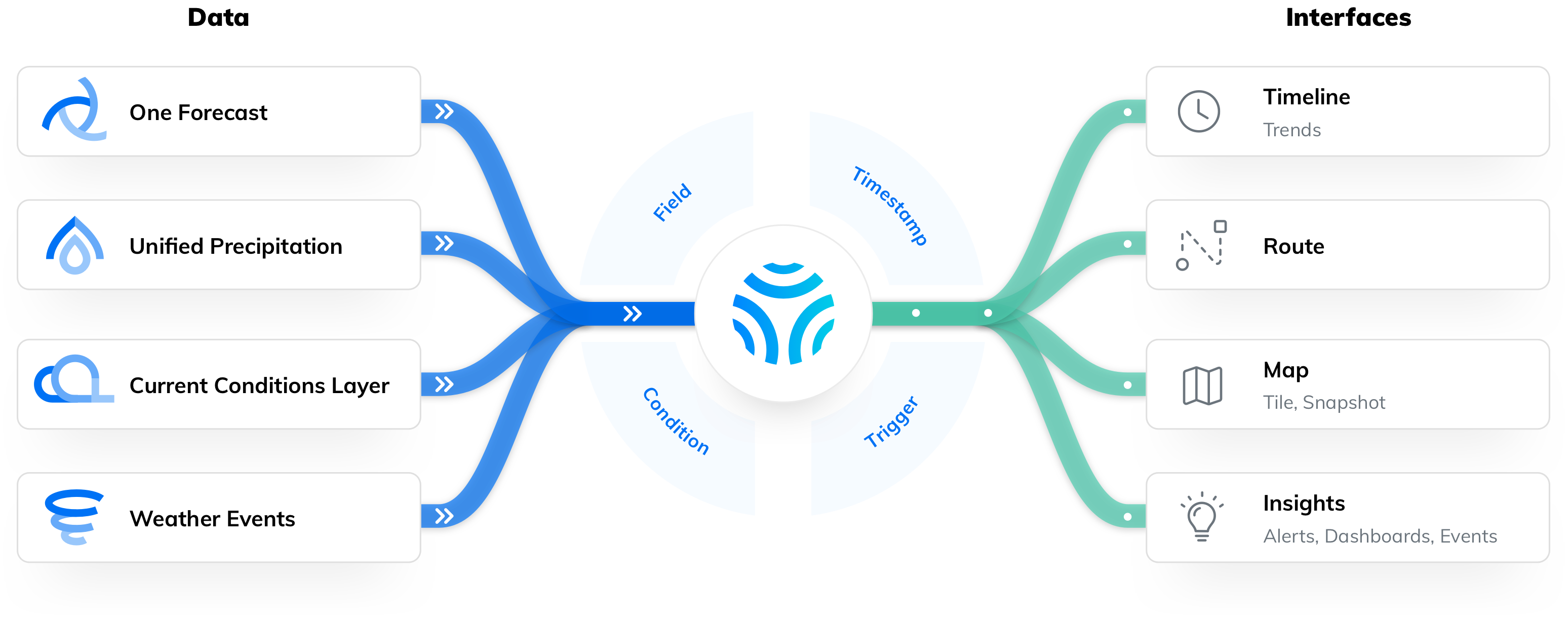Why Tomorrow.io's REST Weather API?
The interesting secret about the weather industry is that most weather companies, television meteorologists, and weather apps all rely on the same four primary sources of weather data: radar, weather satellites, weather stations, and radiosonde (weather balloons). While these are all extremely valuable, there are gaps in their coverage and they miss some weather patterns. This is why it’s important that a REST weather API includes all four of these traditional sources, as well as some unique
data sources with new sensing technologies.
Tomorrow.io uses those same traditional sources, but also new sensing technologies, including cell towers, not used by anyone else. This data has the following advantages over data from traditional REST weather APIs:
- Hyperlocal observation of weather: 500 meter radius observation vs. 2,000-4,000 meters
- Ground-level tracking: Precipitation as low as 30 feet off the ground vs. over 1,000 feet for radar.
- Up-to-date data delivery: Many REST weather APIs can deliver data every minute, but that data can be 5-20 minutes old (or older). Tomorrow.io delivers updated data every minute.
- Minutely forecasting: Tomorrow.io provides minute-by-minute forecast data for 0-6 hours out. Most other REST weather APIs provide this data in 1-hour chunks vs. 1-minute.
What is the "Platform"?
There are two parts to the Tomorrow.io platform, the data itself which is represented as field values and/or insight events, and the many interfaces with that data, allowing you to predict, automate, and solve your biggest weather challenges.

Once you’re subscribed to the right data, there are several different things you can do with it, from using it in its raw form, through sharing and collaborating with your team to configuring proactive alerts. Continue reading to learn more about all of the capabilities powered by our platform.
Where does the data come from?
A massive collection of traditional sources and Tomorrow.io proprietary data is fed to our "supercomputer" called Andromeda, which runs throughout the day to calculate our Current Conditions Layer (CCL), Unified Precipitation (UP), and 1Forecast (1F) weather models as well as digest all of our Weather Events (WE) feeds.
Then, the rich collection of data points is channeled to the Tomorrow.io platform either as Data Layers (fields), Insight Categories (events) - to which you can subscribe and tailor to your own use case using any of our interfaces.
What are the interfaces?
Tomorrow.io introduces multiple innovative ways to interact with the weather.
With Events, you can get all the insights you need to tell you when your weather conditions are met and what actions to take. Get these however you want: as log data for recordkeeping, through proactive alert notification for immediate action, or visualized in operational dashboards.
Query any data point throughout a Timeline with a single call. Use this to retrieve the short-term/long-term forecast timeline of any data field, compare it to another to identify trends, or travel back in time to our historical data collection.
Visualize weather on an interactive Map, by picking and choosing any of our growing collection of weather data to pull tiles of weather conditions to use on another map client. You can also properly calculate ETAs, avoid weather-risks, and maximize efficiency with the Route endpoints.